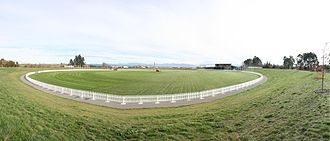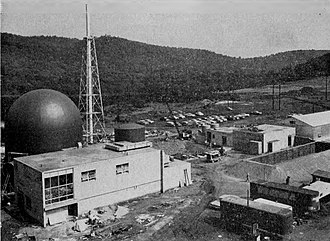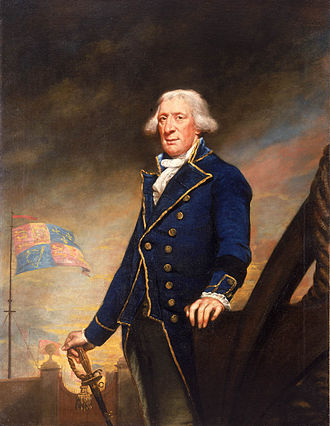Discover Your Roots
SIGN UPDiscover Your Roots
SIGN UPSaxton is an English gender-neutral name, meaning "From The Village Of The Saxons." It has historical significance, as it refers to the Saxons, a Germanic tribe that played a crucial role in the early medieval history of England. The name has been associated with various places, including Saxton in the United States and New Zealand, as well as notable individuals such as Alexander Saxton, an American historian, and novelist, and Jad Saxton, an American voice actress. Additionally, the name has been linked to titles such as the Saxton baronets and establishments like The Saxton Group, a U.S. restaurant franchisee. Saxton holds a rich cultural and geographical legacy, making it a name with depth and historical resonance.

Saxton Oval, also known as Saxton Field, is a prominent cricket ground situated in Saxton, Stoke, Nelson Region, New Zealand. Notably, it served as one of the venues for the 2015 Cricket World Cup, hosting three matches during the tournament. The ground was meticulously constructed by the Nelson Cricket Association, marking their relocation from Trafalgar Park, at an estimated cost of $3.8 million. Additionally, Saxton Oval forms part of a broader sports complex, encompassing facilities for athletics, association football, field hockey, and softball. Its inaugural usage occurred in a Twenty20 match in the 2009–10 HRV Cup, and it subsequently hosted List A and first-class matches in the 2011-12 Ford Trophy and the 2011-12 Plunket Shield. Moreover, the venue also welcomed international teams during the 2011 Rugby Union World Cup. Notably, it witnessed its first men's one day international match in January 2014 and its first men's T20 international match in December 2017. Furthermore, Saxton Oval has been witness to several notable achievements, including international centuries. For more detailed information, Saxton Oval can be explored further at ESPNcricinfo and CricketArchive.

The Saxton Nuclear Experiment Station, also known as the Saxton Nuclear Generating Station, was a small nuclear power plant located in Bedford County, near Saxton, Pennsylvania. The plant was a light water, pressurized water reactor designed and constructed by Westinghouse Electric Corporation. It shared systems and components with an existing coal-fueled electricity generating plant. The reactor coolant system contained a single loop of piping and components, operating at pressures and temperatures typical of later commercial nuclear reactors. The facility was designed for testing and development functions, featuring a superheated steam test loop and other equipment. The reactor vessel and coolant system were housed inside a steel containment vessel, providing radiological shielding and protection. The plant was unique in its early, routine use of mixed oxide fuels, with different fuel assemblies and cladding materials. Construction began in February 1960 and the plant was connected to an existing turbine generator for electrical power production. The plant had a net power output of 23.5 MW-thermal and 3.25 MW-electric, primarily serving research and training purposes. It was shut down in May 1972 and decommissioned by 2005.

The Saxton River is a significant waterway in New Zealand's South Island, specifically located in the Marlborough Region. Originating from the east of the Raglan Range, it flows in a southern direction and eventually meets the Acheron River, approximately 10 kilometers west of Molesworth Station. Notably, Molesworth Station stands as the largest farm in New Zealand, covering over 1,800 square kilometers. This high country cattle station holds great importance within the region. For further information on rivers in New Zealand, refer to the List of rivers of New Zealand. Sources for this information can be found in the New Zealand Gazetteer, published by Land Information New Zealand.

The Saxton Baronetcy of Circourt at Denchworth in Berkshire (now Oxfordshire) was a distinguished title in the Baronetage of Great Britain. Established on 26 July 1794 for Charles Saxton, a prominent figure who served as Commissioner of the Royal Navy, the baronetcy held great significance. The second Baronet, Charles Saxton, also made a mark in history by representing Cashel in the parliament. Tragically, the title came to an end upon his passing in 1838. The legacy of the Saxton baronets lives on as a part of British history. Sir Charles Saxton, the 1st Baronet (circa 1730–1808) and Sir Charles Saxton, the 2nd Baronet (1773–1838) will always be remembered for their contributions to society. For further information, you can refer to Leigh Rayment's list of baronets.

All images displayed on this page are sourced from Wikipedia or Wikimedia Commons.We use these images under their respective Creative Commons or public domain licenses. Wherever applicable, author attributions and license information are provided. If you believe an image is used incorrectly or outside its license terms, please contact us so that we can review and correct the issue.